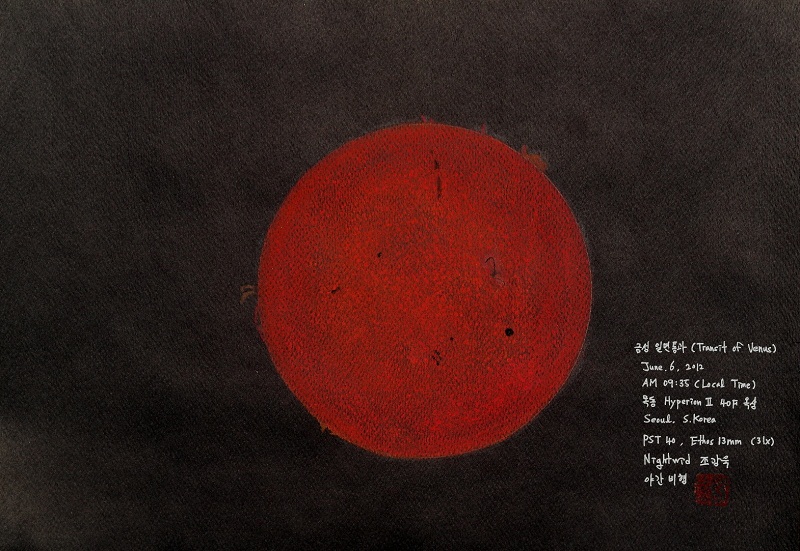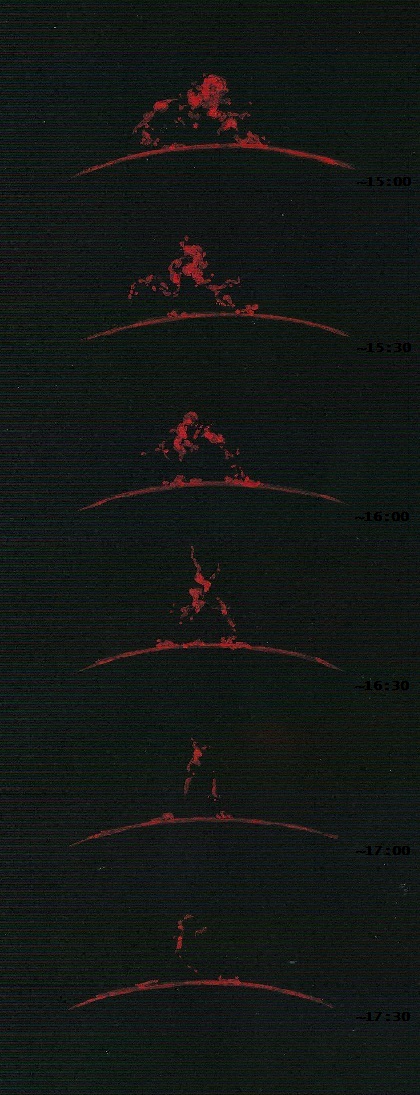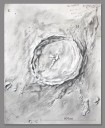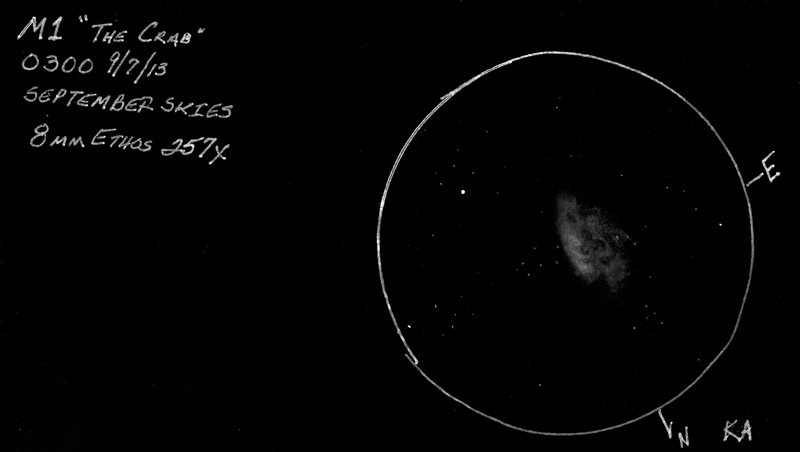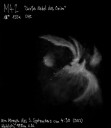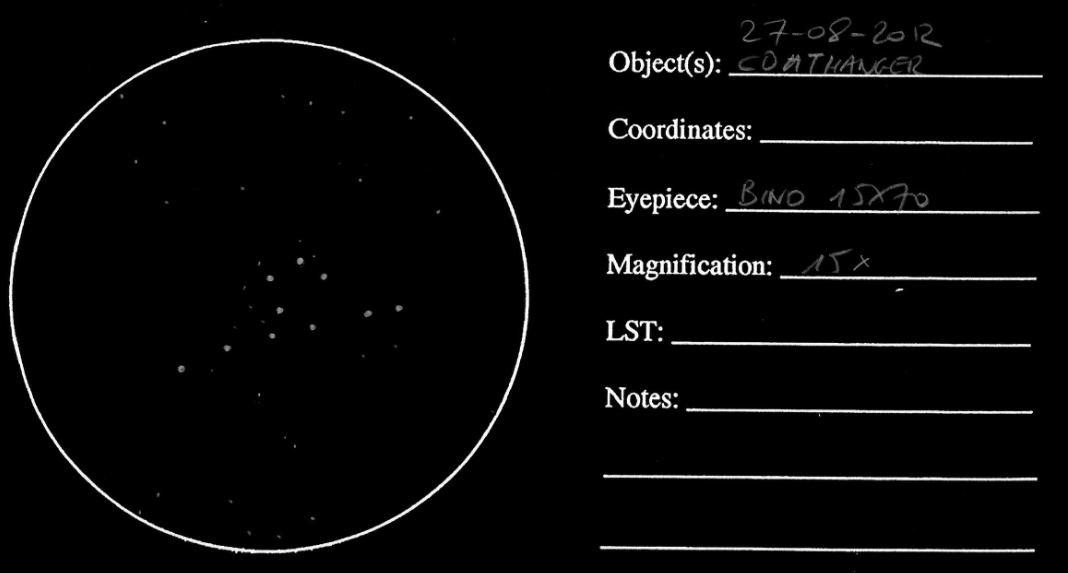
The Gigantic Face on the Yura Mountain Range

Although recently I have very much interested in Lunar horizon landscpe observation, and also it is a serious hard work that need preparationes, concentrations, patiences to acquire the most valuable results that nobody has seen yet .
So , for me, Lunar horizon observation time is limited , as a or two months of winter season in a year.
Then, other seasons, I useally observe others.
With a fairly good optics [like mine or better…], anyone can find out enormous amount of details on the face of the moon [also on the limb].
One night, very accidentally, I had just seen a much interesting feature in the binocular eyepieces attatched on my faithful 8 inches refractor on along the Yura Mountains range [= Montes Yuras ] , which very resembance to a human’s face … a giant’s face… !! . I was instantlly surprised at the view …. !!!
It’s real dimension , I measured from the diameter of 100 km Plato , must be about within 20 km in length.
Among the many moon sketches of mine , in which shows many curious, grotesque features.. and this gigantic human face is one of that.
Unfortunatelly, by interuption of front roof top, observing time is limited only as 15 minutes, that limits more details on this sktch.
——-[ Upside is the North of moon, Right side is West. ]—–
by K.S.Min
8 inches refractor x340- 500
white paper, graphite pencils, photographed under 300 watt white bulb
At backyard home, in South Korea
The Transit of Venus
M84, M86 and More
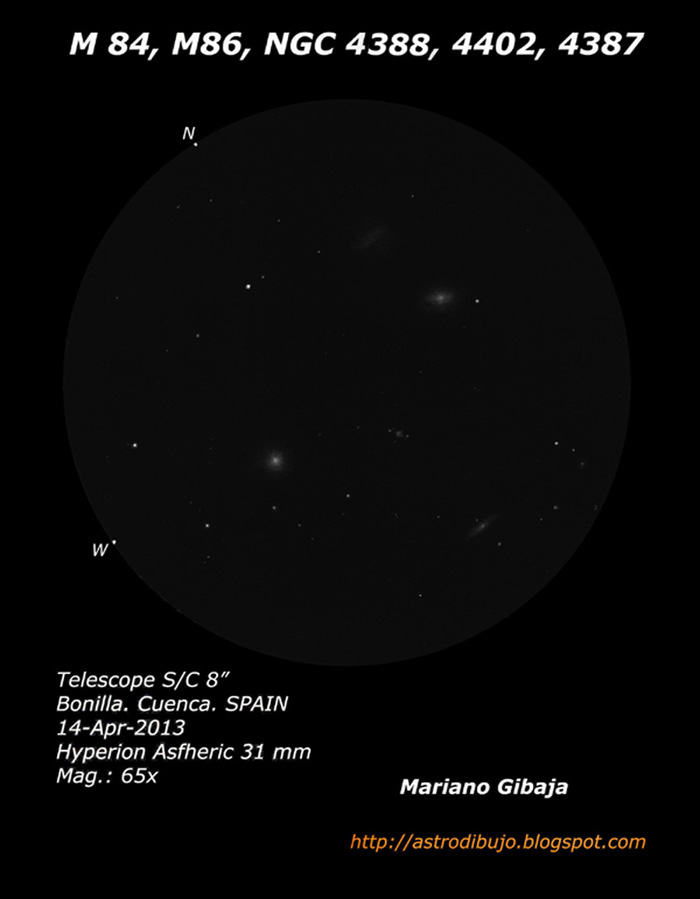
Object Name: M 84, M 86, NGC 4388, NGC 4402, NGC 4387
Location: M 84: RA: 12h 25m 03.7s; Dec: +12° 53′ 13″
M 86: RA: 12h 26m 11.7s; Dec: +12° 56′ 462
Constellation: Virgo
Observing Location: Bonilla. Cuenca. SPAIN
Date: 13-14 April 2013.
Material used: graphite pencil on white paper. Inverted image and processed with Photoshop.
Celestron Telescope S/C 8″ Mount Cgt-5
Eyepiece: Hyperion Aspheric 31 mm;
Magnification: 65x.
Conditions: NEML: 5.9, Temp.: 10° C.
More information: http://astrodibujo.blogspot.com.es/
Solar Prominence Sequence
Jupiter’s Wondrous Red Spot
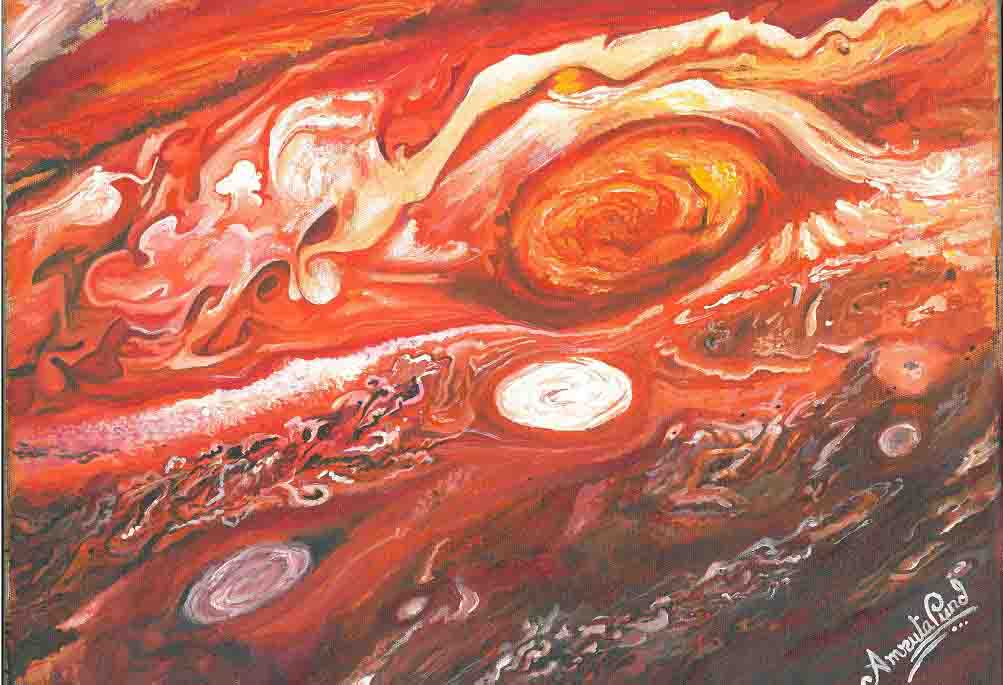
This is the drawing I have made last year. ….
It represents the Great Red Spot of Jupiter.I have mentioned the details of the drawing below.Thank you.
Object Name : Jupiter
Object Type : Planet
Location : Pune, Maharashtra, India.
Date : 28 June 2012
Media : Canvass and acrylic colors
Thanks & Regards,
Amruta Sunil Pund
Eratosthenes
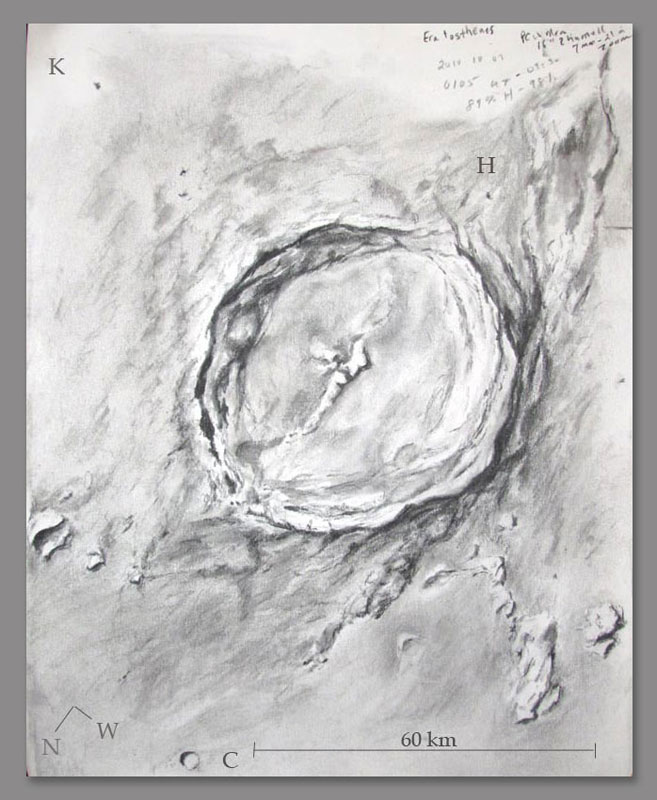
2011 10 07, 0330UT Eratosthenes
PCW Memorial Observatory, OH, USA, Erika Rix
www.pcwobservatory.com
Eratosthenes: Complex crater from Eratosthenian geological period (from –3.2 billion year to –1.1 billion years)
Lat: 14.5 deg N, Long: 11.3 deg W
Zhumell 16”, 21-7mm Zhumell, 257x, no filter
Temp14C, 89% increasing to 98% humidity, S: Antoniadi II, T: 6/6
Eyepiece sketch on Rite in the Rain paper, charcoal
Phase: 54.3 deg, Lunation: 9.68d, Illumination: 79.1%
Lib. Lat: -05:01, Lib. Long: +05:37
Az: +246:38, Alt: -07:34
Eratosthenian geological period includes fairly young, non-rayed fresh craters. I did notice a Copernican ray to the N of Eratosthenes and several patches of lightened areas within the surrounding areas. Eratosthenes has very steep, tormented walls and is approximately 60km x 60km wide. It has an elongated central mountain with several summits. Its morphology is very similar to impact crater Copernicus, but its rays most likely deteriorated from weather and age.
The distance of this crater from the terminator made it perfect for studying the floor and terraced walls. The western floor edge was difficult to differentiate from where the upslope began for its wall. It appeared to be more a lightening with a few darkened lines.
For comparison, here is an image from the Lunar Orbiter (through the Lunar and Planetary Institute site). My sketch is the eyepiece view from my telescope and will need to be rotated 180 degrees to match the Lunar Orbiter image.
Halley’s Comet
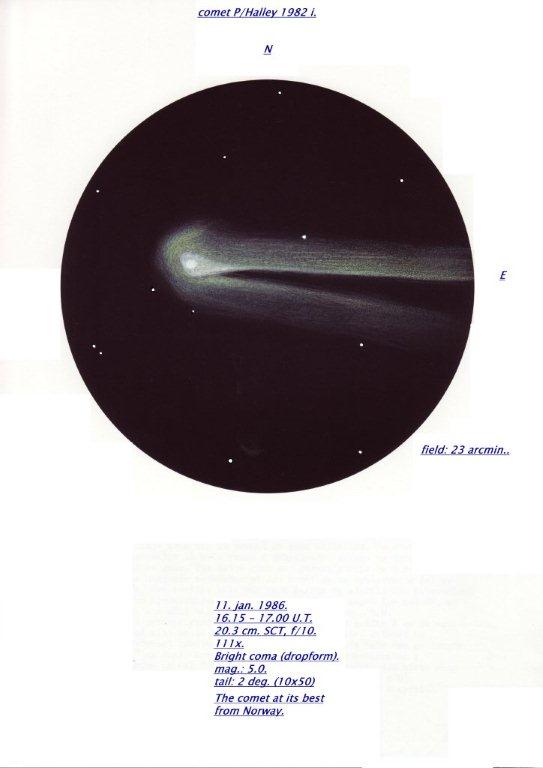
Hey Artists!
My sketch here, shows the famous comet Halley as seen at its best from Norway.
The bright coma had a drop-form, and a halo was seen in the outer coma to west.
In my 10 x 50 binos, the tail was narrow and 2 deg. long. Info on my sketch.
Halley returns in 2061, so good luck to the younger observers!
I used colour crayons on black paper.
Location : Trondheim, Norway.
Best wishes from : Per-Jonny Bremseth.
The Crab
Orion Nebula from the Black Forest
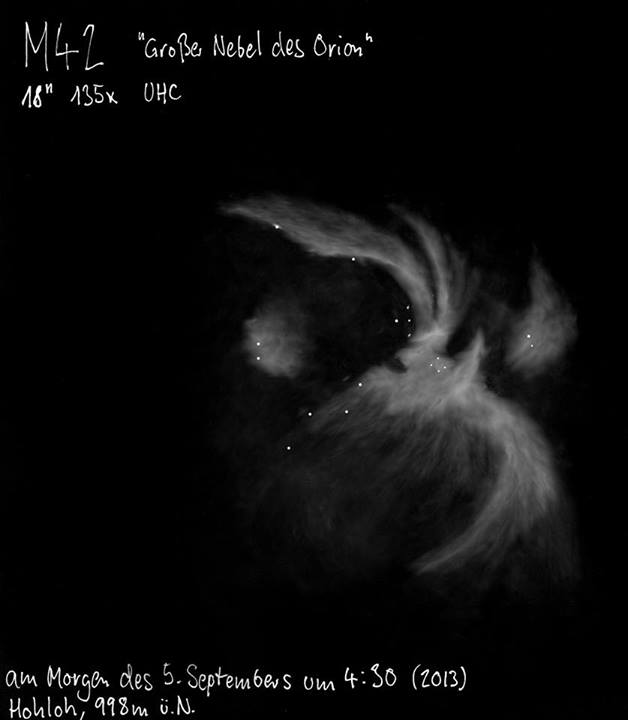
Hello,
This is my sketch of the orion nebula, drawn on September, 5th 2013, 4:30h at Kaltenbronn Hohloh, black forest, germany, at 998m with my 18″ Dobson Telescope at 135x using an UHC filter.
Height: 18 degrees over Horizon
Drawn with pencil on white paper, scanned, inverted, and processed to remove “dust-stars” from scanning, darkened, and used the smudge tool to recreate the filaments in the nebula.
Kind regards,
Arndt Schädler



